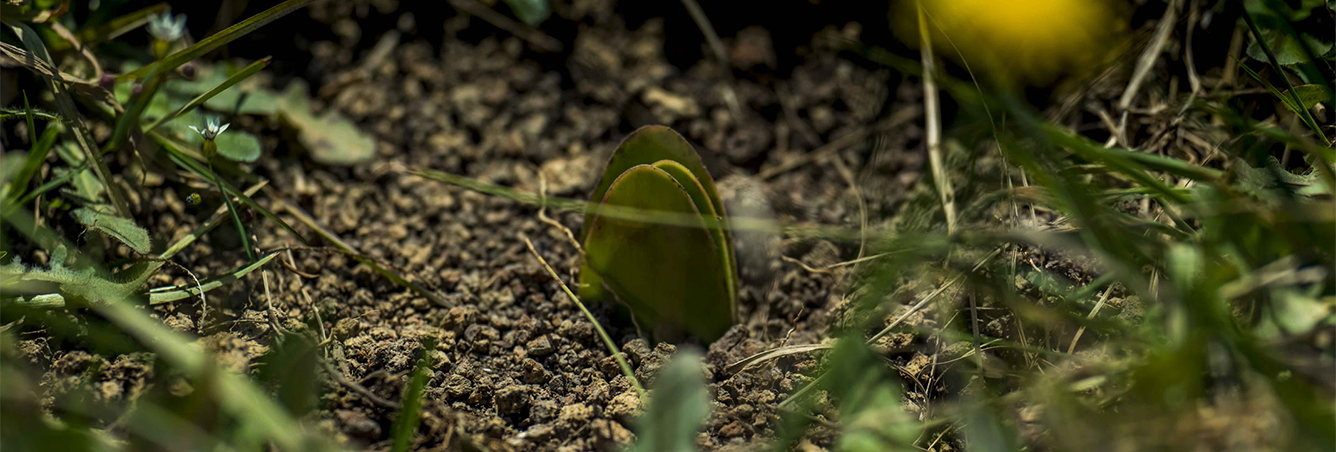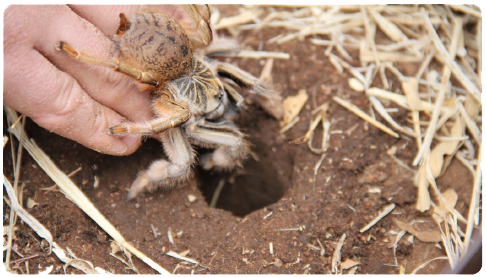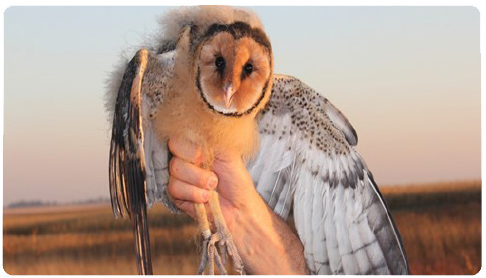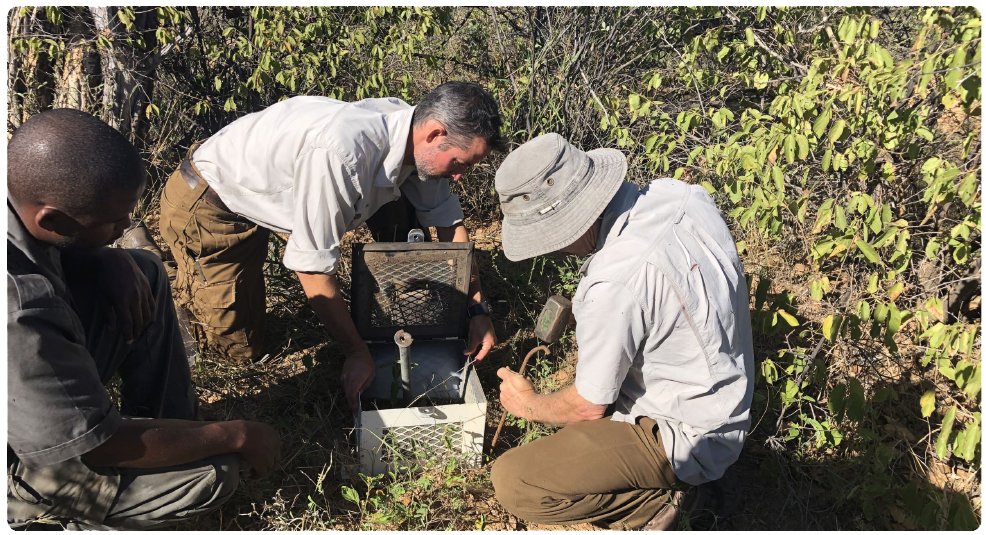Currently viewing: Biodiversity | Next: Environmental liabilities and rehabilitation
Biodiversity loss caused by human activity is a fundamental risk to our urban and natural habitats and the ecological systems we rely on. Unmanaged, mining activities may impact these systems. It is an economic and ethical imperative for the industry, Exxaro, the communities that depend on biodiversity resources to prioritise its conservation. We do this through being understanding our impacts on biodiversity before we start any activity and continuous bio monitoring system and reporting as part of our environmental incident reporting. Our long-term goal is to be a low-impact, bio-regenerative organisation now and for future generations.
We manage biodiversity through:
As part of our Sustainable Growth and Impact strategy, we are committed to ensuring that our mines, co-exist in harmony with the surrounding natural environment.
Exxaro is committed to ensuring the protection and conservation of biodiversity-rich ecosystems, including the protection of red data species, threatened and protected species and the management and control of alien invader species. Our efforts are aligned with the legislative environmental framework governed mainly by the National Environmental Management Biodiversity Act, 2004 (Act 10 of 2004).
Our renewable energy business manages biodiversity around its facilities through an operational environmental management programme, and aligns its approach with the Equator Principles and the IFC's Performance Standard 6 (IFC PS6) guidelines on biodiversity conservation and sustainable management of living natural resources.
Exxaro takes a holistic approach to biodiversity and is committed to:
To achieve our biodiversity goals, Exxaro collaborates with key stakeholders including, among others, the:
Accountability and responsibility
Our biodiversity management programmes and stakeholder engagement efforts are managed by a balanced team from our operations and head office, including executives and mine management, as well as sustainability and environmental specialists.

Indigenous flora protected by Exxaro's biodiversity policy
Pleasingly, no biodiversity-related grievances were lodged during the year.
Biodiversity relocation and conservation programmes
Our programmes range according to the various biodiversity needs of our different BUs.
Baboon spider relocation
African grass-owl project
Baboon spider relocation

At Grootegeluk, our team, in close cooperation with the authorities, successfully relocated Baboon spiders and some protected succulent species as our mining footprint expands. This is not a project but continuous biodiversity vigilance for protected and endangered species. At Belfast, a similar project is scheduled for 2022, subject to the relevant permits being issued.
African grass-owl project

This project monitors the grass-owl population at Matla to ensure mining and associated activities do not impact the population. The project is ongoing and the grass owl count will be re-evaluated in 2022.
Manketti Conservancy Area

The Manketti Game Reserve is one of our biodiversity projects surrounding Grootegeluk. The 22 000ha reserve optimises land use while protecting the operation's sustainability. Managed by Ferroland Grondtrust, a wholly owned subsidiary of Exxaro, the land was a cattle farm until 18 years ago when indigenous wildlife species were introduced. The thriving game reserve generates income from commercial hunting and game trading as well as accommodation provided by the Manketti Lodge. The reserve is home to many small and large predators as well as other animals. Due to its location and size, the reserve has a responsibility to maintain the ecological balance of the prescribed area and manage the land unimpacted by mining operations around Grootegeluk. This year, the reserve sustainably achieved the ecological stocking rate of wildlife and seen a drastic improvement in vegetation conditions.
Since 2016, Cennergi has implemented several biodiversity monitoring programmes including alien plant control management, birds and bat monitoring, off-site Cape vulture programme and on-site Cape vulture food management programme.
Bat curtailment programme
Cape vulture management
Bat curtailment programme
Amakhala Emoyeni windfarm introduced a strategy to minimise bat fatalities due to bat fatality in line with our zero harm principle This strategy includes a curtailment regime at the seven turbines identified as causing the most fatalities and considered bat activity patterns and weather parameters.
During the October 2020 to May 2021 curtailment programme, resulted in no bat fatalities showing early success of the intervention.
Bird and bat monitoring programme
As part of our commitment to mitigating the impact of windfarms on avifauna, Cennergi has employed local carcass search companies since 2016 to undertake bird and bat fatality monitoring, in accordance with the South African Bird and Wind Energy Facilities Guidelines.
Cape vulture management

Amakhala Emoyeni also supports the Eastern Cape vulture safe zone research programme implemented by the Endangered Wildlife Trust which aims to:
One juvenile Cape vulture fatality was recorded in October 2021 attributed to the lambing season.
Why this is important
Positive outcomes
Why this is important
We monitor, control and eradicate invasive alien plant species found on our sites to avoid:
Positive outcomes
We monitor, control and eradicate invasive alien plant species found on our sites to avoid:
Our progress across our sites includes:
| Stage 1 | Stage 2 | Stage 3 | ||||||
| Development of invader species management plan |
Physical implementation (removal of invader species) |
Maintenance (eradication of invaders on rehabilitated land) |
||||||
| Belfast | ✓ | • | • | |||||
| Leeuwpan | ✓ | ✓ | ||||||
| Matla | ✓ | ✓ | ||||||
| Grootegeluk | ✓ | • | • | |||||
| Tshikondeni | ✓ | ✓ | • | |||||
| ECC* | ✓ | ✓ |
* Divestment concluded in September 2021. Project will not be tracked and reporting.
| Land cleared of invader plants (ha) | 2021 | 2020 | 2019 |
| Leeuwpan | 118 | 146 | 172 |
|---|---|---|---|
| Matla | 23 | 70 | 6 |
| ECC* | 0 | 4 | 0 |
| Tshikondeni | 264 | 198 | 0 |
| Total | 405 | 418 | 178 |
* Divestment concluded in September 2021.
An alien eradication programme has been operating at Cennergi's windfarm operations since 2016. A local full-time contractor manages the programme and alien plant species within the operational boundaries. The Department of Agriculture, Land Reform and Rural Development issued a positive compliance letter following an inspection on declared weeds and invaders plants in September 2021.

Farmland around Cennergi's Tsitsikamma windfarm
Our Belfast operation appointed the Council for Scientific and Industrial Research (CSIR) to determine natural hydrological drivers and anthropogenic stressors of pans in the vicinity of the mine in 2019. Accordingly, we conducted wet season sampling in January 2020 in the mining right area to monitor this. We sampled and analysed 10 pans for physicochemical and chemical isotope parameters, while the benthic phytoplankton samples were analysed for diversity and dominance. Findings from the 2020 assessment compared to the 2019 report indicate that no deprivation occurred. We used this project to establish a baseline on the state of the pans prior to mining commencing and since then, an external reviewer undertakes monthly and quarterly monitoring of the pans. The need for a review of the outcomes of the research study will be undertaken in 2022.
Rehabilitation of the wetland system adjacent to the Belfast operation was completed in 2020. The primary rehabilitation interventions included establishing concrete and high-density polyethylene liner walls, constructing concrete drop inlet weirs, and backfilling the Klein Komati River's main channel to re-establish a channelled valley-bottom wetland. All interventions in the original rehabilitation plan were implemented and the process to recover the system is underway. Continuous monitoring of the system's functioning and the performance of implemented interventions took place in 2021 and will continue into 2022. To support this, a weir was installed along the wetlands at Klein Komati to help monitor flow through the wetland. Planning for phase two of the project will commence in 2022 and will look at improving the wetlands around the total Belfast mining right area.
At Grootegeluk, the proof-of-concept study for the seasonal pans in the LoM footprint area was completed, with six seasonal pans created using donor material from pans that will be lost to mining. The five-year monitoring programme will commence in 2022 so as to assess the success of this recreation and determine if these pans can successfully be recreated as part of future rehabilitation or offsetting.
Matla completed its wetland offset project in 2020 in line with commitments made to DWS to operate its water treatment plant. Ongoing maintenance was completed in 2021 and a contractor was appointed towards the end of 2021 to monitor the status of the rehabilitation work and maintenance work undertaken. The monitoring will be ongoing for 2022. The wetland rehabilitation project for Matle Mine 2 has been drafted and will be finalised in 2022 for implementation in 2023.
The implementation of the approved offset strategy at Leeuwpan, as part of the Block OI project, was once again delayed and planning is scheduled to begin in 2022.
As part of Exxaro's efforts to consolidate our biodiversity programmes, we will reassess our impacts in 2022 to identify specific targets and related KPIs to measure our performance.
To ensure compliance and continued conservation of areas around our operations, biomonitoring, the implementation of alien invasive control plans, and biodiversity management plans will commence at all BUs in the next financial year.
In May 2021, Cennergi together with the IFC and WildSkies team, developed the BMMP to ensure no net loss of biodiversity, as defined in IFC PS6 for a project located within natural habitat.
The windfarm is located within the Drakensberg Montane Grasslands, Woodlands and Forests ecoregion and is classified according to IFC PS6 as it is situated within a natural habitat, despite not meeting any of the five IFC PS6 critical habitat criteria. However, 0.5% of the global Cape vulture population use an area within 50km of the windfarm for foraging during the summer months, exceeding one of the two threshold components of critical habitat criterion 1 and seven other IUCN Red List bird species also occur at the project site: blue crane, Denham's bustard, southern black korhaan, secretary bird, black harrier, tawny eagle and martial eagle.
The principal biodiversity risk at the windfarm is susceptible birds and bats colliding with rotating wind turbine blades. Our main objective is to identify those species at highest risk and establish fatality thresholds for adaptive management to safeguard these populations.
Bat fatality thresholds at Amakhala Emoyeni will be assessed against the South African bat fatality threshold guidelines (MacEwan et al, 2018;2021). The annual threshold bat fatality rate ranges between nine (in unfavourable climate and environmental conditions, eg drought years) and 38 (in more favourable climate and environmental conditions).
Nine species were classified as having zero fatality thresholds. These priority birds include Cape vultures, tawny eagles, black harriers, martial eagles, Denham's bustards, blue cranes, W-bellied korhaans, black korhaans and secretary birds.
Fatality reported
Incident report
Response plan
 Report Index
Report Index Integrated Report 2021
Integrated Report 2021
